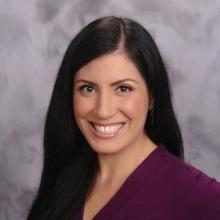- As a cardiothoracic surgeon practicing in the community, you may be asked to do both cardiac and thoracic surgery.
- While you may be eager to do it all, know your strengths, ensure safe outcomes, and set short-term and long-term goals.
- Build a referral pattern, know when to say no, and don’t underestimate the power of a phone call!
“Jack of all trades, master of none, though oftentimes better than a master of one.”

In training, you are surrounded by highly specialized cardiac and thoracic surgeons who are often subspecialized and have created a niche within their practice. Yet, as a cardiothoracic surgeon practicing in the community, you may be asked to do both cardiac and thoracic surgery. A skillset in open, minimally invasive, robotic, structural, and endovascular surgery is highly desired. You may be eager to do it all.
Yet, it is essential to pause, reflect, and “first, do no harm.” Know your strengths, ensure safe outcomes, and set short-term and long-term goals. If you’re in your first year of practice, it may be in your best interest to prioritize patient selection and pursue more bread-and-butter cases. With that said, you don’t want to wait too long to incorporate a special skill set as you may risk losing confidence in performing this skill. As a cardiothoracic surgeon practicing in the community, you may seek to have a broad skill set or you may elect to develop a niche. Both options are viable and valuable.
Ego aside
During your first few years in practice, it is important to understand surgical risk stratification as it pertains to the patient, your experience level, and the experience of your team. Just because you can perform the surgery, doesn’t mean that you should. Oftentimes, patient selection is equally as important, if not more important, than operative ability. Know when to say no or hand off a high-risk case to a more seasoned partner. Ego aside, it is perfectly fine to ask for help and seek feedback. Moreover, having regular discussions with colleagues can help guide you and lead to safer practices.
Building a referral pattern
In community-based practice, many of our patients present as urgent or emergent inpatient referrals from within the hospital setting. Obtaining elective referrals is a bit more nuanced. Building a referral pattern requires the investment of time, effort, and communication.
Many hospital systems have a provider-relations specialist to help in this setting. Pair up with this specialist and take advantage of every opportunity to meet with inpatient and outpatient primary care providers, pulmonologists, and cardiologists. Let them know exactly the types of surgeries you perform, especially if you bring a new skill set that was not previously practiced.
Whether you’re meeting with primary care providers during a quick lunch break, or if you’re able to coordinate a dinner to gather and discuss opportunities, get to know them and their patient population. Inquire about the specific needs within the community. If referrals are going elsewhere, inquire why this is occurring and offer to provide a solution.
A quick phone call to the referring provider immediately after the surgery is good etiquette and helps to secure the referral pattern relationship. If there was an unforeseen complication, speak openly and honestly about it. Your referring providers will appreciate your honesty, humility, and genuine human connection.
As an early-career cardiothoracic surgeon, building a practice in the community remains highly rewarding, yet brings unique challenges. Effective communication can accelerate the growth of your practice. Don’t underestimate the power of a phone call!
